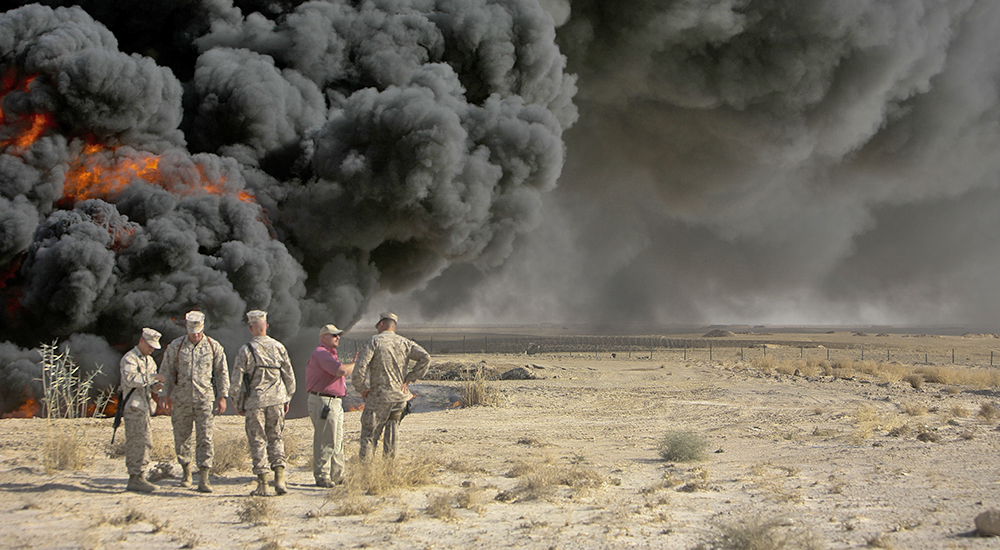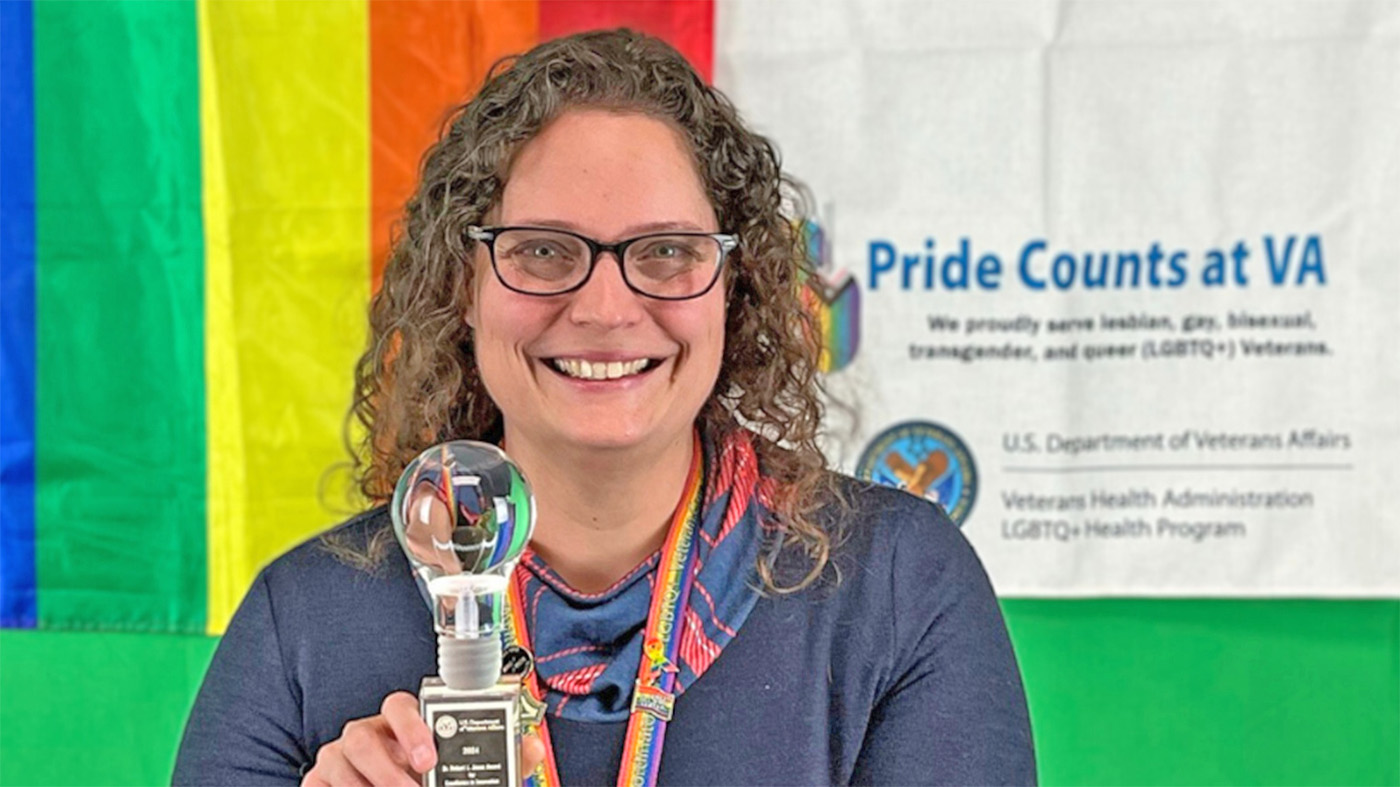After leaving the corps, a 35-year-old Marine Corps Veteran decided to pursue his dream of becoming a police officer.
The burning pain in his chest, shortness of breath, and painful, persistent cough were overwhelming. He never thought he’d be forced to withdraw from the academy for not keeping up, but there he was: embarrassed about his physical state and without answers.
He sought care at a VA pulmonary clinic where a doctor initially diagnosed and treated him for asthma, gastroesophageal reflux disease and rhinitis. But none of these treatments provided relief. A comprehensive physical exam showed he didn’t have a neuromuscular disorder or diaphragmatic weakness (a weak diaphragm is typical of these disorders).
Further tests ruled out the original diagnosis of asthma, and a CT scan showed mild air trapping, but no evidence of interstitial lung disease.
Fortunately, further in-depth evaluation of his case (and others like it) is happening at the VA Airborne Hazards and Burn Pits Center of Excellence (AHBPCE), which is co-located with the War Related Illness and Injury Study Center, and their associated Post-Deployment Cardiopulmonary Evaluation Network (PDCEN).
Evaluation led to diagnosis and treatment plan
Part of that evaluation focused on the Veteran’s deployment history, which included that more than a decade earlier, the patient had twice deployed to Operation Iraqi Freedom between 2003-2005.
“This Veteran’s evaluation at the New Jersey War Related Injury and Illness Study Center was instrumental in his care” said Dr. John Osterholzer, staff pulmonologist at the Ann Arbor VA. “They helped identify important details about his deployment history and obtained additional testing that helped us not only establish his diagnosis, but also provide a treatment plan we felt would promote a healthier life.
“This showed how our VA institutions can work together to provide truly remarkable Veteran-centered care our Veterans wouldn’t receive outside VA.”
Exposed to respiratory hazards
While driving trucks and performing often risky convoy security missions, the patient was exposed to several respiratory hazards that were common during deployments to Iraq and Afghanistan in the post September 11 era. This included an open burn pit on his base where he frequently visited to dispose trash.
He also helped burn human waste, ignited with a kerosene-based fuel, in 50-gallon drums. He never wore any personal protective equipment and recalled that exposure to smoke from the burn pit and human waste drums triggered a cough and phlegm.
In addition to this information, doctors from the AHBPCE also heavily examined the particulate matter in these environments, a mixture of solid particles and liquid droplets in the air that can often impact health.
Combing through patient history for answers
The story above was recently coauthored (and published in the New England Journal of Medicine) by specialty diagnosticians at the AHBPCE, where doctors and other specialists are taking on cases where the initial diagnosis and lack of symptom improvement calls for more in-depth evaluation.
Research at AHBPCE allows VA to bridge the gap between symptoms, findings from comprehensive clinical evaluation, and other scientific information and observations.
“Using the case report format for this research allows us to provide a very detailed look into what a clinician encounters in practice which could help guide future avenues of research,” said Dr. Michael Falvo, Ph.D., co-director, AHBPCE. “For example, the details around a Veteran’s specific military occupations and civilian experiences help researchers design broad assessments that consider all factors that may influence cardiopulmonary function.”
Questions require close look at all evidence
Falvo explained how observations in this case will help other Veterans, as well as other clinicians, looking for answers. He explained the center works with partners like Osterholzer and the Post-Deployment Cardiopulmonary Evaluation Network to develop robust approaches to evaluating problems like shortness of breath following deployment.
Work at the AHBPCE is resulting in better evaluation, management and care for Veterans like the one in this story. The center is determining whether certain exposures result in specific health consequences, answering complex questions that require a close look at all evidence – including stateside factors.
Veterans like this one want and deserve answers, and the AHBPCE is determined to find those answers. After a multidisciplinary review, and with the help of an effective treatment plan, the Veteran reports his health has improved.
If you’re a Veteran with symptoms you suspect may be related to environmental exposures or airborne hazards, we encourage you to sign up for the Airborne Hazards and Open Burn Pit Registry, and speak to your primary care physician. Even without symptoms, consider signing up if you served in Operations Desert Storm/Desert Shield, New Dawn, Iraqi Freedom, or Enduring Freedom. Your participation helps VA put data to work for Veterans, to better understand the potential health of effects of exposure to airborne hazards during military service.
Topics in this story
More Stories
Bob Jesse Award celebrates the achievements of a VA employee and a team or department that exemplifies innovative practices within VA.
The Medical Foster Home program offers Veterans an alternative to nursing homes.
Watch the Under Secretary for Health and a panel of experts discuss VA Health Connect tele-emergency care.








And jet fuel? My husband served during the Korean War era as a jet mechanic. He now has Lewy Body Dementia with Parkinsonism
VA offers eligible Veterans who may have been exposed to a variety of environmental and chemical hazards that carried potential health risks info on where and how to get help. Seehttps://www.publichealth.va.gov/exposures/
https://www.publichealth.va.gov/exposures/benefits/registry-evaluation.asp.
how about Korea,nam, and all others. I stirred sh-tters with untold numbers or other enlisted e1-e3 because once you made e-4 it was sort of above your pay grade. but it was one of the jobs and we did it not knowing it was a negative experience. not much different than orange. im now have high blood pressure, diabetes ,3 different lukemia’s and more!!!!
don’t think that there is only one war that was effected !!!!